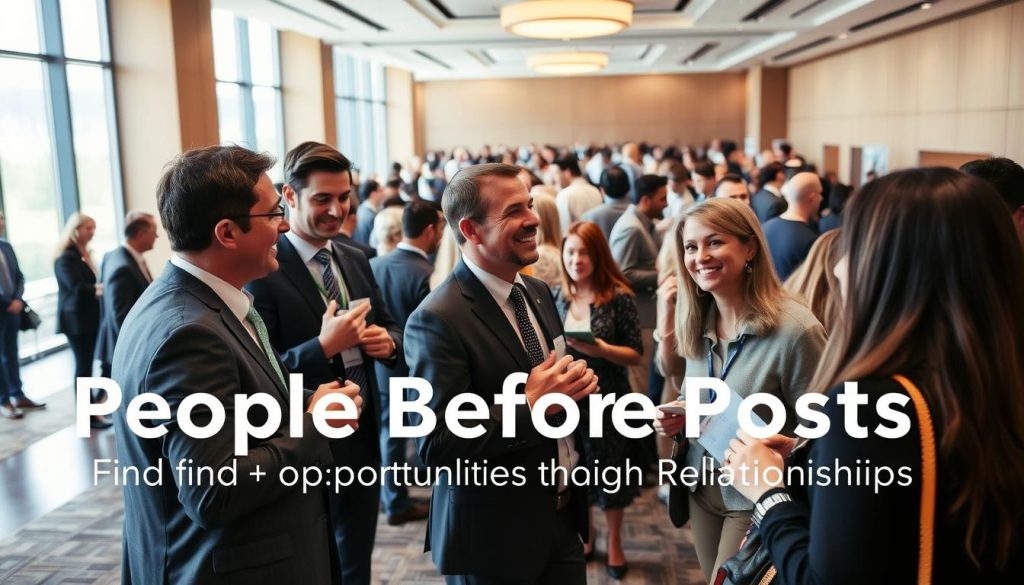Feeling stuck despite a good job on paper? Many professionals in France and beyond find themselves comfortably uncomfortable. They cycle between bursts of energy and long pauses. That pattern makes change feel slow.
This guide is a friendly, practical how-to. It shows steps to align your work with your life and clarify goals. Action often brings clarity; waiting rarely does.
We’ll map mindset, strengths, and real-world action. You’ll learn why relationship-led moves beat endless job-board scrolling. Expect a marathon, not a sprint.
Use this piece as a navigational map. It blends frameworks, named examples, and concrete actions so you can find a better place as you progress.
Table of Contents
Key Takeaways
- Small experiments and people connections matter more than perfect plans.
- Action precedes clarity—start with tiny real-world moves.
- Radical pivots need relationship-led strategies, not only job boards.
- Real change takes time; treat it like a long run.
- This guide gives step-by-step tools to align work with life and goals.
Start Here: Why Changing Careers Feels Hard—And Why It’s Worth It
The early phase of change often brings fear, doubt, and a strange numbness. You might replay the same day and feel unsure where to begin. Those feelings are normal and do not mean you chose the wrong path.
Practical pressures make it harder. The job market filters out non-linear applicants. Relying only on postings and recruiters can feel discouraging when your experience doesn’t fit neat boxes.
Identity and family obligations add weight. Worries about salary, status, and work-life balance are real parts of the decision.
Most successful moves look like a marathon, not a sprint. Small, steady steps over months or years usually win.
- Normalize uncertainty—doubt is part of the process.
- Rethink how you search and how you tell your story.
- Set clear, small goals and measure progress.
« I felt numb for months, then tiny experiments brought clarity. »
This guide is a practical companion. Use it to build structure, support, and a way forward when times feel tough.
Master Your Mindset: Overcoming Fear and Building Momentum
When anxiety shows up, treat it like information, not a stop sign. Fear about salary, status, or others’ opinions is normal. Name those feelings first; naming reduces their power and gives you clarity.
Normalize the Emotions
It’s common to feel anxious while also wanting a better way of living and working. That mix of excitement and dread does not mean you are failing.
Small experiments help. Write your fears on paper and pick one tiny action to test them.
Reframe Fear as Growth
Flip “what if it fails?” to “what if it works?” and watch momentum appear. Fear often signals growth is near.
Celebrate micro-wins like sending one outreach note or finishing a short exercise to convert doubt into action.

Don’t Go Alone
Build a circle of people: mentors, coaches, and peers hold you accountable and offer perspective.
One example: a professional found progress after hiring two coaches and joining a peer group. Over years of steady work, small choices added up to a clear new way of life.
- Schedule regular check-ins to compound momentum.
- Protect energy by limiting news and comparisons.
- Keep the bar at consistent progress, not perfection.
« Tiny, steady actions beat perfect plans every time. »
For practical steps on growth and skills, explore a short guide to professional development.
Map Your Strengths: Transferable Skills You Already Have
Start by naming the actions you repeat at work; those often point to your strongest skills. Make a short list of roles, side projects, and volunteering. Pull out the common abilities you used most—communication, leadership, problem-solving, and digital fluency.

Create a Skills Inventory
Write three columns: role, core skill, clear outcome. Use simple phrases so a hiring manager in any industry understands the value.
Translate Experience Across Industries
Turn tasks into outcomes. Replace job-specific terms with results: « cut costs by 15% » or « led a cross-functional project to deadline. »
Show, Don’t Tell
Evidence matters. Build a short projects list with metrics—revenues, efficiency gains, or timelines met. Keep an examples bank of one-minute stories (context, action, result).
Align Strengths With Opportunities
Pick 3–5 target roles and map your top skills to what those roles need. Use a one-page strengths brief to stay focused and tailor applications quickly.
« Hiring teams care more about how you solve problems than your old job title. »
Act It Out, Don’t Figure It Out: Small Steps That Create Clarity
Take short actions that prove or disprove your ideas quickly. Replace endless thinking with tests you can run in weekends, evenings, or one focused month. Action precedes clarity; small moves make answers appear.
Test Ideas Safely
Enroll in a concise course, book a shadow day, or try a micro-internship. One person took a part-time journalism course and shadowed PR, then sat with a Japanese yen bond trader to rule things out. Those experiments led to a social startup role that felt right.
Low-Risk Projects
Run freelance or pro bono pilots alongside your day job. Chris Donovan started with a two-day shoe-design class and then chose Polimoda in Florence after more small tests. Low-risk projects teach faster than theory.
Follow Energy Over Passion
Track tasks that put you in flow. Note one outreach, one test, and one reflection each week. Time-box tests (two weekends or one month) and write a short debrief after each experiment. Treat every step as valuable data across years.

« Tiny experiments let you learn without burning bridges. »
- Keep your plan light: weekly cadence beats perfect blueprints.
- Use short tests to gather fast, usable clarity.
- Treat each result as guidance, not a final verdict.
People Before Posts: Find Opportunities Through Relationships
Connections reveal real opportunities; reach out to those living the work you want.
Opportunities attach to people, not clouds. Prioritize meeting others who already do the work you aim for. One introvert advanced by scheduling one-on-one chats, doing pro bono tasks, then offering consultancy that turned into full-time work.

Expand Beyond Your Existing Network
Look past familiar circles to meet people in the world you want to join. Krishelle Hardson-Hurley refined her story, reached a Dropbox contact, and landed an engineering role.
Authentic Outreach
Write short, curiosity-led messages asking for perspective, not a job. Offer a clear 15–20 minute window and one concise reason you admire their work.
The Relationship Ladder
Build trust in stages: informational chats → small help or collaboration → short project → roles. Let value lead the way.
- For introverts: favor one-on-one calls and prepare 3–4 thoughtful questions.
- Offer concrete value: share a resource, an idea, or volunteer on a micro-project.
- Keep a simple CRM: name, date, follow-up note, next step.
« Jobs often go to known quantities; be visible, be helpful, and let people experience how you work. »
| Stage | Action | Goal |
|---|---|---|
| Informational chat | 15–20 min call; ask about daily work | Learn realities of the role |
| Small help | Share a useful article or quick suggestion | Show value and build rapport |
| Short project | Volunteer a micro-task or consult briefly | Demonstrate work style and reliability |
| Role | Apply or be invited for a paid position | Join the team with trust already built |
For a practical start, explore networking opportunities to find people who open doors to hidden jobs and roles.
career transition Branding: Tell a Compelling, Credible Story
Good branding turns scattered experience into a single, forward-focused narrative recruiters can scan in seconds. Start by updating your headline and summary so they state where you’re headed and front-load the skills that matter for your target role and industry.
Refresh CV and LinkedIn: mirror job postings for keyword alignment. Use accomplishment bullets with metrics—percent improvements, timelines, or budgets—to show how your skills create success.
Craft Your Personal Statement
Write a short statement that explains motivation, direction, and the value you plan to deliver toward clear goals. Keep it one or two sentences so it reads fast.
Selective Narrative & Proof
Connect past strengths to future contributions using plain, forward-focused language. Build a lightweight portfolio with 2–4 case studies that demonstrate outcomes, not duties.
- Update headline and summary to reflect target skills and roles.
- Align profile keywords with real jobs so recruiters find you.
- Include short testimonials or references to borrow credibility.
- Keep a simple plan to refresh your CV/LinkedIn after each new project.
« Krishelle Hardson-Hurley bridged teaching to tech by investing in a clear narrative that impressed a Dropbox contact. »
For help shaping market positioning and headlines, see market positioning tips.
Plan the Practicalities: Time, Money, Boundaries, and Next Steps
Decide the minimums for pay, scope, and time so your next step protects your priorities. Choose non-negotiables now: role scope you accept, a salary floor, and the balance you need at home.
Define Your Walk-Away Point
Set clear standards before you negotiate with anyone. Rina Einy drew a firm line after the Olympics, then moved into finance and later leadership. Julian Mather likewise emphasizes letting go to start fresh.
Write a short list: minimum salary, must-have responsibilities, and the work-life balance that keeps you sane. Treat this as protection, not a wish list.
Create a Lean Plan
Build a simple timeline with three milestones and weekly steps you can do alongside your current job.
- Budget both time and money: assign weekly outreach blocks and save a cushion to reduce pressure.
- Use a “steady march” habit: repeat the same small actions each week rather than sprinting.
- Expect parts of the path to take years. Add contingencies so setbacks don’t derail progress.
Review monthly. Keep what works, drop what doesn’t, and treat milestones as feedback loops. Set boundaries on after-hours work so you keep energy for the plan and your life.
« Small, steady steps protect your finances and your focus. »
Conclusion
One modest action today can reframe the whole path ahead.
Bring the fundamentals together: small tests, people-first outreach, and clear storytelling make steady progress in any career change.
Commit to one next step: update your materials, schedule a short conversation, or scope a micro-project beside your current job. These simple moves build momentum over time.
Balance effort with your life and protect time for rest. If you want structured help, consider professional support to speed clarity and open new opportunities.
Remember: persistent, people-led action over weeks and months creates the kinds of job and role changes most people value.
FAQ
How do I start when I feel stuck and unsure about changing my role?
Start small: list what energizes you, update one part of your LinkedIn profile, and try a short online course or informational call each week. These actions reduce fear and build momentum without requiring a full leap. Focus on clarity, not perfection.
How can I overcome fear about leaving my current job?
Reframe fear as data. Break big worries into specific what-ifs, then test them with low-risk experiments like freelancing or shadowing. Talk with mentors or a coach to normalize emotions and get accountability. Small wins reduce anxiety and increase confidence.
What are the most useful transferable skills I likely already have?
Look for communication, leadership, project management, problem-solving, and collaboration. Document specific examples with metrics or outcomes. Those skills translate across industries and make your story credible to hiring managers.
How do I show my experience when I don’t have direct examples in the new field?
Show, don’t tell: create case studies from side projects, volunteer work, or internal initiatives. Use measurable results—time saved, revenue influenced, process improvements—to prove impact. Portfolios and short project summaries work well on LinkedIn and resumes.
What are safe ways to test a new path without quitting my job?
Try micro-internships, part-time freelance gigs, pro bono projects, or short courses with practical assignments. These low-risk tests reveal real fit and build evidence. Schedule them deliberately so they don’t disrupt your current role.
How do I build a network that opens real opportunities?
Prioritize authentic outreach: ask for stories and advice rather than favors. Attend meetups, industry events, and alumni discussions. Move connections up the relationship ladder—informational chats, joint projects, then formal roles or referrals.
What should I change on my resume and LinkedIn to stand out?
Refresh headlines and summaries to state your target role and unique value. Use keywords aligned with job descriptions and highlight transferable results. Add a concise personal statement and a portfolio link with 2–3 case studies that show outcomes.
How do I balance time, money, and boundaries during this shift?
Create a lean plan with milestones and a timeline. Define your walk-away standards for salary, role, and work-life balance. Budget for transition costs and set weekly time blocks for skill-building so progress is steady and sustainable.
When should I involve mentors or a coach?
Bring them in early to help reframe goals, build a skills inventory, and design tests. A mentor can offer industry context; a coach helps with mindset and accountability. Regular check-ins speed progress and reduce unnecessary detours.
How long does it usually take to move into a new field?
Timelines vary—many people make meaningful moves in 6–18 months using focused testing, networking, and upskilling. Progress depends on how much time you can commit, financial cushion, and the gap between current skills and target roles.
How do I decide which roles to pursue when I have multiple interests?
Prioritize roles that match your strengths, offer growth, and align with lifestyle needs. Test top options with short projects and informational interviews. Follow energy—choose paths that give you flow and steady motivation.
What practical steps can I take this week to move forward?
Update your LinkedIn headline, schedule two informational calls, enroll in a short skills course, and start a small project that demonstrates relevant work. These actions build evidence, expand your network, and create clarity fast.





